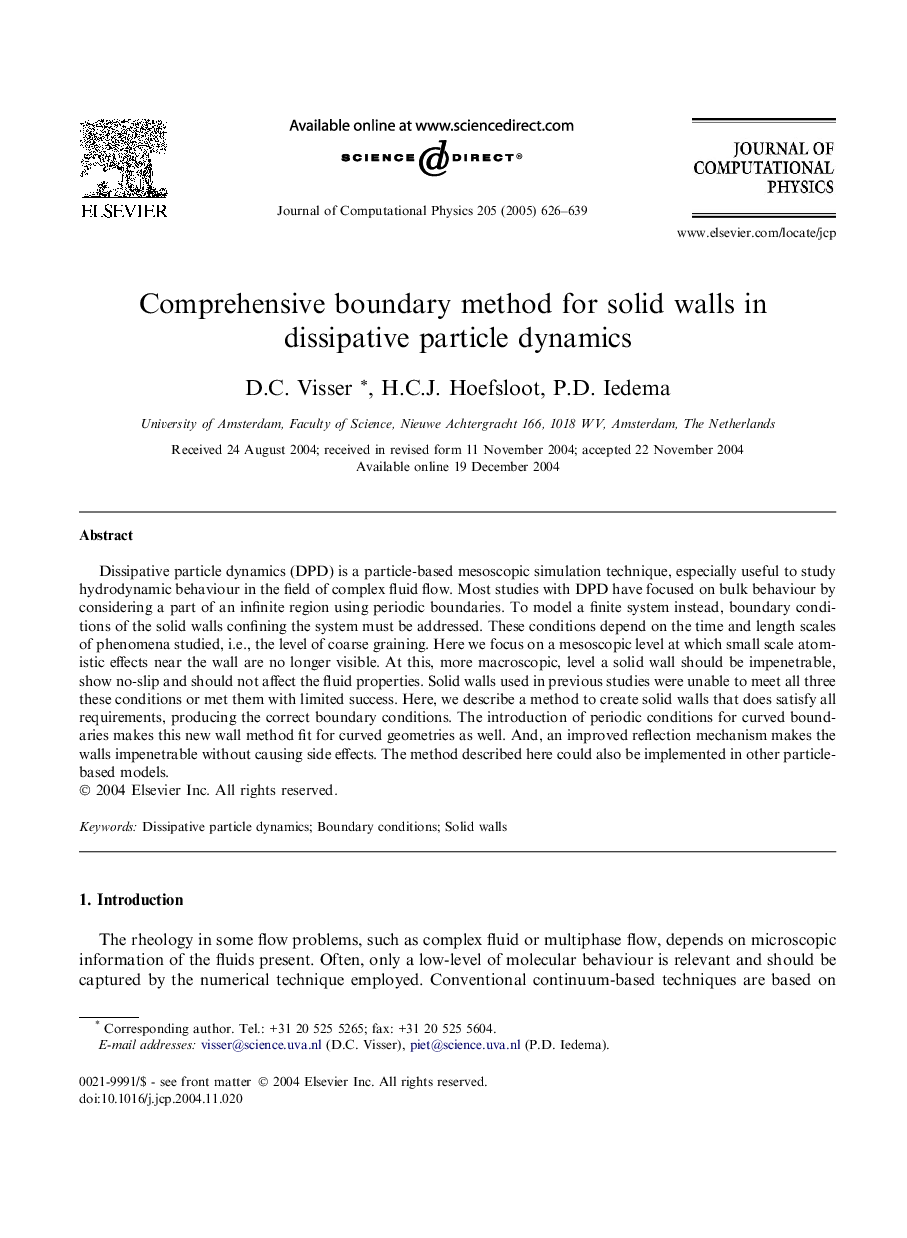| Article ID | Journal | Published Year | Pages | File Type |
|---|---|---|---|---|
| 10357165 | Journal of Computational Physics | 2005 | 14 Pages |
Abstract
Dissipative particle dynamics (DPD) is a particle-based mesoscopic simulation technique, especially useful to study hydrodynamic behaviour in the field of complex fluid flow. Most studies with DPD have focused on bulk behaviour by considering a part of an infinite region using periodic boundaries. To model a finite system instead, boundary conditions of the solid walls confining the system must be addressed. These conditions depend on the time and length scales of phenomena studied, i.e., the level of coarse graining. Here we focus on a mesoscopic level at which small scale atomistic effects near the wall are no longer visible. At this, more macroscopic, level a solid wall should be impenetrable, show no-slip and should not affect the fluid properties. Solid walls used in previous studies were unable to meet all three these conditions or met them with limited success. Here, we describe a method to create solid walls that does satisfy all requirements, producing the correct boundary conditions. The introduction of periodic conditions for curved boundaries makes this new wall method fit for curved geometries as well. And, an improved reflection mechanism makes the walls impenetrable without causing side effects. The method described here could also be implemented in other particle-based models.
Related Topics
Physical Sciences and Engineering
Computer Science
Computer Science Applications
Authors
D.C. Visser, H.C.J. Hoefsloot, P.D. Iedema,
